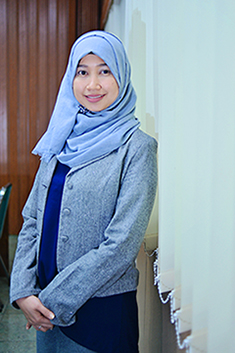Antihyperglycemic Activity of Red Fruit Oil (Pandanus conoideus Lam) on Improving Kidney Function in STZ- NA-Induced Nephropathy Rats
Downloads
Background: Type 2 diabetes mellitus can cause complications, one of which is diabetic nephropathy. Parameters that indicate damage to the kidneys are the increase in creatinine and albumin levels. One of the traditional medicines used in the treatment of DM is red fruit (Pandanus conoideus Lam). Objective: The purpose of this study was to determine the antihyperglycemic activity and the effect of red fruit oil administration on creatinine levels, microalbumin, and renal histopathology in STZ-NA-induced rats. Methods: This study used 30 male Wistar rats conditioned with type 2 DM with STZ-NA induction. The rats have grouped into 6 groups: group I, the normal control, group II, the negative control, group III, the positive control (pioglitazone 15 mg/kg BW), and groups IV, V, and VI, the red fruit oil respectively 1.35 mL/kg BW,2.7 mL/kg BW, and 5.4 mL/kg BW. Red fruit oil is made in traditional way and prepared for 2 days. Parameters tested in the study include blood glucose levels, creatinine, microalbumin, and kidney histopathology. Data analysis used the ANOVA method followed by Tukey's post hoc test. Results: The results showed that a red fruit oil dose of 5.4 mL/kg BW was an effective dose in reducing blood glucose levels, microalbuminuria, and serum creatinine, and repairing damage to the kidneys of rats. The percent activity of a red fruit oil dose of 5.4 mL/kgBW for blood glucose levels, microalbuminuria and serum creatinine were 84.69%, 76.30%, and 92.20% respectively. Conclusion: Red fruit oil can reduce blood glucose levels, creatinine levels, microalbumin and can repair kidney damage.
Aditya, A., Udiyono A., Saraswati. L. D., & Setyawan. H. (2018). Screening Fungsi Ginjal sebagai Perbaikan Outcome Pengobatan pada Penderita Diabetes Mellitus Tipe II (Studi Di Wilayah Kerja Puskesmas Ngesrep). Jurnal Kesehatan Masyarakat; 6; 191-199.
Agnesa, O. S., Waluyo, J., & Prihatin, J. (2014). Aktivitas Hipoglikemik Ekstrak Buah Merah Diabetes. Jember: Universitas Jember.
Aji, N. P., Bachri, M. S., & Khasanah, N. (2019). Efek Kombinasi Ekstrak Etanol Herba Sambiloto (Andrographis paniculata) dan Daun Kelor (Moringa oleifera) Terhadap Kadar Ureum dan Kreatinin pada Tikus Wistar yang Diinduksi Streptozotocin. Jurnal Akademi Farmasi Prayoga; 1; 33–41.
Alfarisi, S., Basuki, W., & Susantiningsih, T. (2012). Perbedaan Kadar Kreatinin Serum Pasien Diabetes Melitus Tipe 2 yang Terkontrol dengan yang tidak Terkontrol Di RSUD Dr. H. Abdul Moeloek Bandar Lampung Tahun 2012. MAJORITY (Medical Journal of Lampung University); 2; 129–136.
Alkatiry, A. R., Sintowati, R. & Sulistyani (2014). Perbandingan Efek Pemberian Minyak Buah Merah (Pandanus conoideus L) dengan Obat Anti Hiperglikemik Oral terhadap Penurunan Kadar Gula Darah Tikus Jantan Galur Wistar (Rattus norvegicus) Diabetik yang Diinduksi oleh Aloksan. Skripsi; Universitas Muhammadiyah Surakarta.
Aprilianti, S., Janah, M., Atma, C. D. & Ningtyas, N. S. I. (2020). Pengaruh Pemberian Minyak Buah Merah (Pandanus conoideus Lam.) terhadap Degenerasi Sel Ginjal Mencit (Mus musculus) yang Dipapar Plumbum. Jurnal Vitek Bidang Kedokteran Hewan; 10; 66–69.
Astuti, Y. & Dewi, L. L. R. (2007). Pengaruh Ekstrak Buah Merah (Pandanus conoideus L.) terhadap Kadar Glukosa Darah. Mutiara Medika Edisi Khusus; 7; 1–6.
Ayomi, A. F. M. (2015). Buah Merah (Pandanus conoideus) terhadap Penyerapan Zat Besi (Fe) dalam Duodenum. Jurnal Agromed Unila; 2; 90–93.
Brownlee, M., Aiello, L. P., Cooper, M. E., Vinik, A. I., Nesto, R. W. & Boulton, A. J. M. (2010). Complications of Diabetes Mellitus in Williams Textbook of Endocrinology. 12th ed. Amsterdam: Elsevier.
Diah, A. W. M. D., Diani, N. K. A. & Jura, M. R. (2016). Efektivitas Ekstrak Buah Merah (Pandanus conoideus De Vriese) Asal Kabupaten Poso sebagai Alternatif Penurun Kadar Gula Darah. Jurnal Akademika Kimia; 5; 185. doi: 10.22487/j24775185.2016.v5.i4.8068.
Febriyanti, R. (2011). Pengaruh Pemberian Ekstrak Buah Merah (Pandanus conoideus) terhadap Kadar Glukosa Darah Tikus Putih (Rattus norvegicus) Diabetik. Jurnal Peternakan; 8; 21–26.
Ghasemi, A., Khalifa, S. & Jedi, S. (2014). Streptozotocin-Nicotinamide-Induced Rat Model of Type 2 Diabetes (Review). Acta Physiologica Hungarica, 101(4), pp. 408–420. doi: 10.1556/APhysiol.101.2014.4.2.
Heriyanto, Gunawan, I. A., Fujii, R., Maoka, T., Shioi, Y., Kameubun, K. M. B., Limantara, L. & Brotosudarmo, T. H. P. (2021). Carotenoid Composition in Buah Merah (Pandanus conoideus Lam.), an Indigenous Red Fruit of the Papua Islands. Journal of Food Composition and Analysis; 96; 1–36. doi: 10.1016/j.jfca.2020.103722.
Infodatin. (2020). Tetap Produktif, Cegah dan Atasi Diabetes Melitus. Pusat Data dan Informasi Kementerian Kesehatan RI. Jakarta: Kementerian Kesehatan RI.
Jannah, D. R. & Budijastuti, W. (2022). Gambaran Histopatologi Toksisitas Ginjal Tikus Jantan (Rattus norvegicus) yang diberi Sirup Umbi Yakon (Smallanthus sonchifolius). LenteraBio: Berkala Ilmiah Biologi; 11; 238–246. doi: 10.26740/lenterabio.v11n2.p238-246.
Keim, A. P. & Sujarwo, W. (2020). Pandanus conoideus Lam. Pandanaceae. In Franco F. (eds) Ethnobotany of the Mountain Regions of Southeast Asia. Berlin: Springer.
Kishore, L., Kajal, A. & Kaur, N. (2017). Role of Nicotinamide in Streptozotocin-Induced Diabetes in Animal Models. Journal of Endocrinology and Thyroid Research; 2; 1-4. doi: 10.19080/jetr.2017.02.555577.
Kristian, J., Zain, S., Nurjanah, S., Widyasanti, A. & Putri, S. H. (2016). Pengaruh Lama Ekstraksi terhadap Rendemen dan Mutu Minyak Bunga Melati Putih menggunakan Metode Ekstraksi Pelarut Menguap (Solvent Extraction). Jurnal Teknotan; 10; 35–43.
Martono & Satino (2014). Deteksi Keparahan Fungsi Ginjal melalui Perubahan Kritis Laju Filtrasi Glomerulus Pasien Hemodialisa. Jurnal Ners; 9; 43–48.
Murnah, M. & Indranila. (2014). Pengaruh Ekstrak Etanol Mengkudu (Morinda citrifolia L) terhadap Diabetik Nefropati pada Tikus Spraque Dawley yang Diinduksi Streptozotocin (STZ). Journal of Nutrition and Health; 2; 1–15.
Natesan, V. & Kim, S. J. (2021). Diabetic Nephropathy – A Review of Risk Factors, Progression, Mechanism, and Dietary Management. Biomolecules and Therapeutics; 29; 365–372. doi: 10.4062/biomolther.2020.204.
Palupi, I. A. & Martosupono, M. (2009). Buah Merah: Potensi dan Manfaatnya sebagai Antioksidan. Jurnal Tumbuhan Obat Indonesia; 2; 42–48.
Pratiwi, I., Sarungallo, Z. L. & Santoso, B. (2020). Sifat Fisikokimia Minyak Buah Merah (Pandanus conoideus Lamk.) Degumming dan Karakteristik Mikroenkapsulat Minyak Buah Merah yang dihasilkan. Agritechnology; 3; 50–58. doi: 10.51310/agritechnology.v3i2.54.
Rias, A. Y. & Sutikno, E. (2017). Hubungan antara Berat Badan dengan Kadar Gula Darah Acak pada Tikus Diabetes Mellitus. Jurnal Wiyata; 4; 72–77.
Rivandi, J. & Yonata, A. (2015). Hubungan Diabetes Melitus dengan Kejadian Gagal Ginjal Kronik. Majority; 4; 27–34.
Santoso, B., Sarungallo, Z. L., Situngkir, R. U., Roreng, M. K., Lisangan, M. M. & Murni, V. (2018). Mutu Kimia Minyak dan Komponen Aktif Minyak Buah Merah (Pandanus conoideus L.) yang Dinetralisasi menggunakan Larutan Alkali. Agritechnology; 1; 66–75.
Sarungallo, Z. L., Santosos, B., Tethool, E. F., Situngkir. R. U. & Tupamahu, J. (2018). Kinetika Perubahan Mutu Minyak Buah Merah (Pandanus conoideus) selama Penyimpanan. Agritech; 38; 64–70. doi: 10.22146/agritech.25216.
Sarungallo, Z. L., Hariyadi, P. & Andarwulan, N. (2014). Pengaruh Metode Ekstraksi terhadap Mutu Kimia dan Komposisi Asam Lemak Minyak Buah Merah (Pandanus conoideus). Jurnal Teknologi Industri Pertanian; 24; 209–217.
Sarungallo, Z. L., Murtiningrum & Paiki, S. (2011). Sifat Fisikokimia Minyak Kasar dan Hasil Degumming dari Buah Merah (Pandanus conoideus L.) yang diekstrak secara Tradisional Merdey. Jurnal Agrotek; 1; 9–15.
Schernthaner, G., Currie, C. J. & Schernthaner, G. H. (2013). Do We Still Need Pioglitazone for the Treatment of Type 2 Diabetes? A Risk-Benefit Critique in 2013. Diabetes Care; 36; 155–161. doi: 10.2337/dcS13- 2031.
Sinaga, F. A., Purba, P. H., Harahap, N. S. & Nailuvar, R. (2019). Effects of Giving Red Fruit Oil on Creatinine and Urea Levels of Rats (Rattus Novergicus) on Maximal Physical Activity. Proceeding of AISTSSE; 1–6. doi: 10.4108/eai.18-10-2018.2287348.
Stahl, W. & Sies, H. (2005). Bioactivity and Protective Effects of Natural Carotenoids. Biochimica et Biophysica Acta - Molecular Basis of Disease; 1740; 101–107. doi: 10.1016/j.bbadis.2004.12.006.
Suastika, P. (2011). Efek Pemberian Buah Merah (Pandanus conoideus) terhadap Perubahan Histopatologik Ginjal dan Hati Mencit Pasca Pemberian Paracetamol. Buletin Veteriner Udayana; 3; 39–44.
Szkudelski, T. (2012). Streptozotocin-Nicotinamide-Induced Diabetes in the Rat. Characteristics of the Experimental Model. Experimental Biology and Medicine; 237; 481–490. doi: 10.1258/ebm.2012.011372.
Ulfa, N. M. & Arfiana, N. (2020). Efektivitas Penggunaan Oral Antidiabetes Kombinasi Glimepiride dengan Pioglitazone pada Pasien Dibetes Mellitus Tipe 2. Journal of Pharmacy and Science; 5; 1–6. doi: 10.53342/pharmasci.v5i1.154.
Verdiansah. (2016). Pemeriksaan Fungsi Ginjal. CDK-237; 43; 148–154.
Wawo, A. H., Lestari, P. & Setyowati, N. (2019). Buah Merah (Pandanus conoideus Lamk) Bioresources Pegunungan Tengah Papua: Keanekaragaman dan Upaya Konservasinya. Jurnal Biologi Indonesia; 15; 107–121.
Widowati, L., Pudjiastuti & Mudahar, H. (2009). Karakterisasi dan Toksisitas Akut pada Minyak Buah Merah (Pandanus conoideus Lam.). Jurnal Kefarmasian; 1; 18–24.
Copyright (c) 2023 JURNAL FARMASI DAN ILMU KEFARMASIAN INDONESIA

This work is licensed under a Creative Commons Attribution-NonCommercial-ShareAlike 4.0 International License.
1. The copyright of this journal belongs to the Editorial Board and Journal Manager with the author's knowledge, while the moral right of the publication belong to the author.
2. The formal legal aspect of journal publication accessibility refers to the Creative Commons Attribution-Non-Commercial-Share Alike (CC BY-NC-SA), which implies that the publication can be used for non-commercial purposes in its original form.
3. Every publication (print/electronic) is open access for educational, research, and library purposes. In addition to the objectives mentioned above, the editorial board is not responsible for copyright infringement


.jpg)















